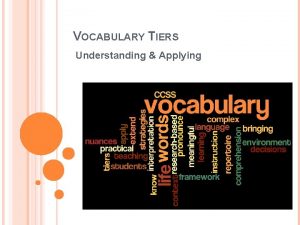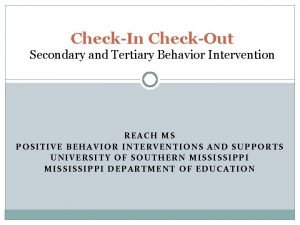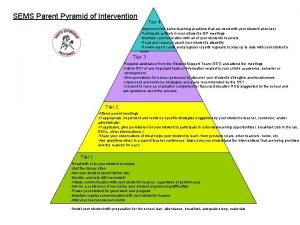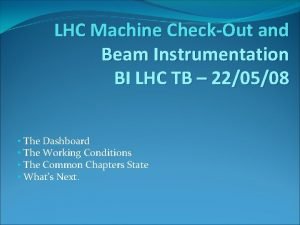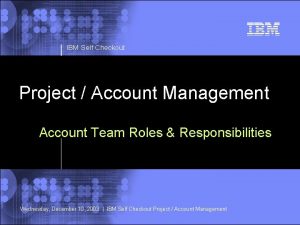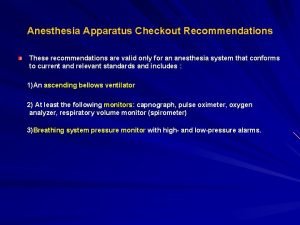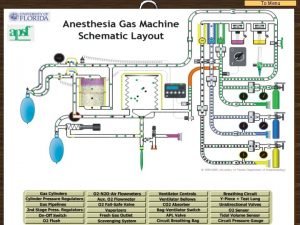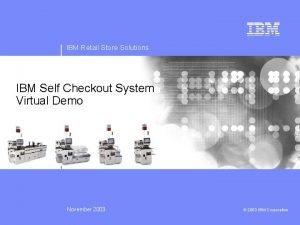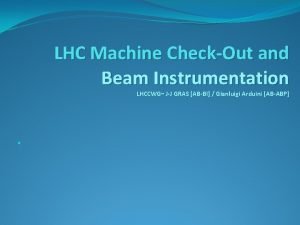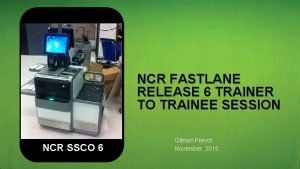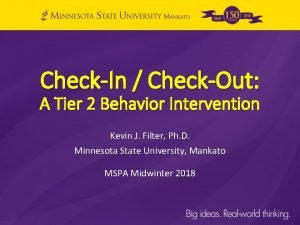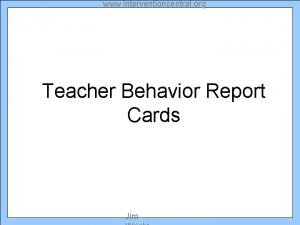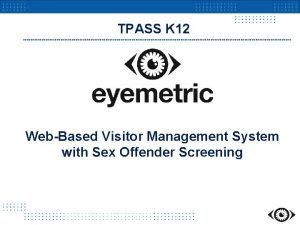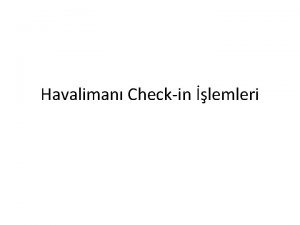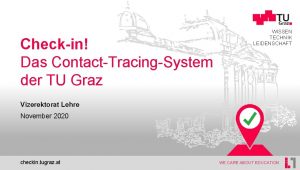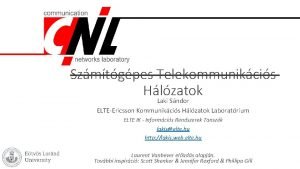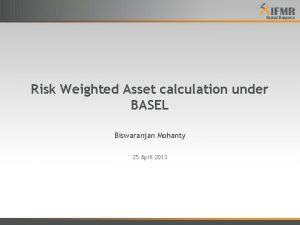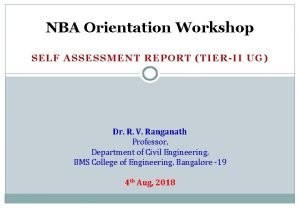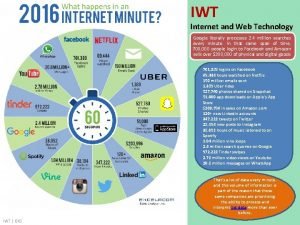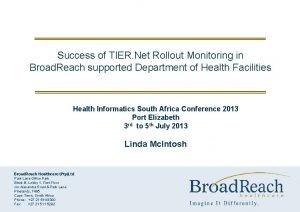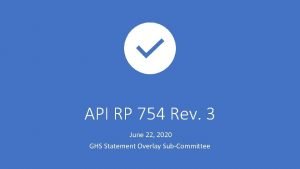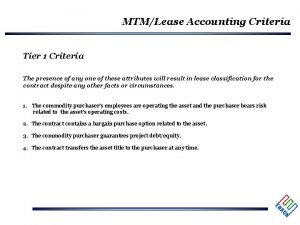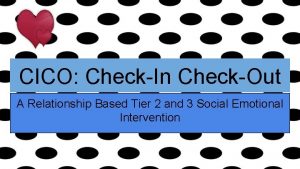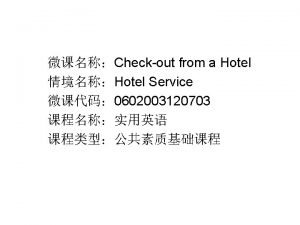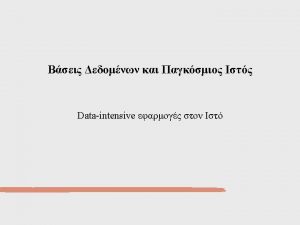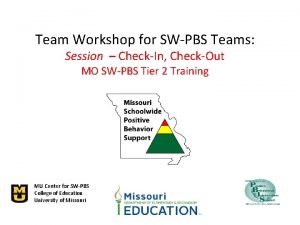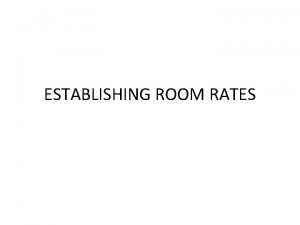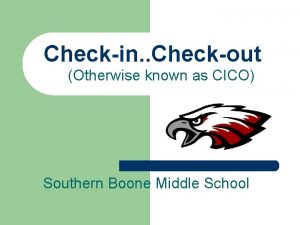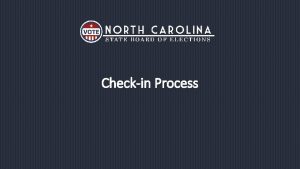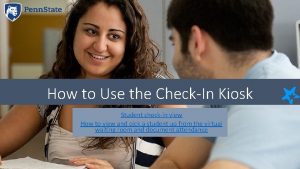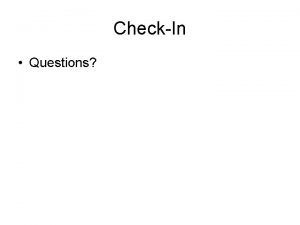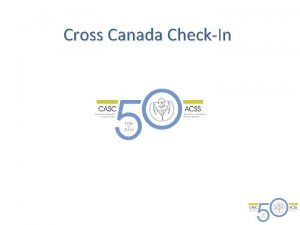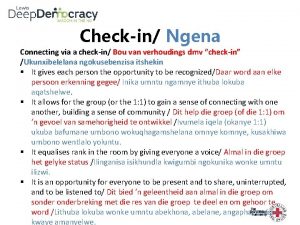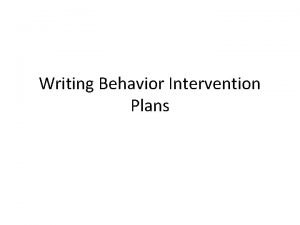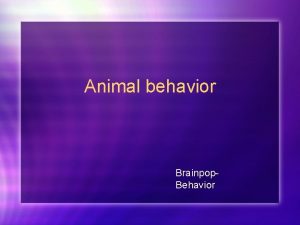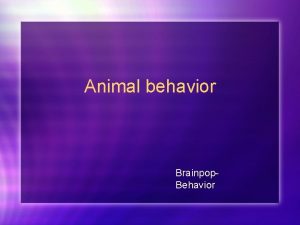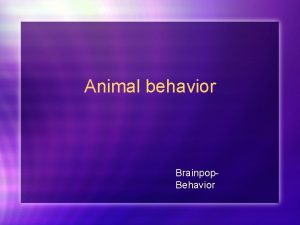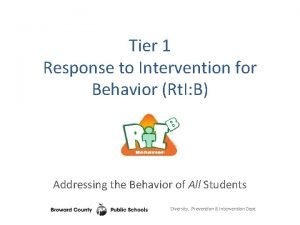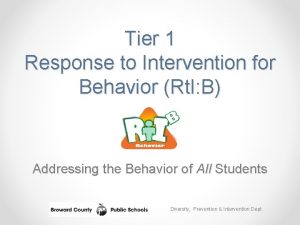CheckIn CheckOut A Tier 2 Behavior Intervention Kevin

Check-In / Check-Out: A Tier 2 Behavior Intervention Kevin J. Filter, Ph. D. Minnesota State University, Mankato MSPA Midwinter 2018

Presentation Overview I. III. IV. V. Intro to Tier 2 and CICO Research Support Implementation Basics Modifications Systems-level Implementation

e r o C S I s B t P n e n o p m o C Level 1 – Incidental Infractions Non-referred/Nonrecorded Level 2 – Minor Infractions Nonreferred/Recorded Level 3 – Major Violations Referred/Recorded Running Loud voices/yelling Hallway loitering Off-task behavior Name calling Noise making Uncooperative Out of seat Missing homework Disruptive Breaking cafeteria rules Breaking playground rules Inappropriate behavior in the bathrooms Chewing gum or eating candy inappropriately Other: Disrespectful Lying/cheating Indirect, inappropriate language/gestures Inappropriate dress Spitting Third Level-1 offense Cell phones and misuse of other electronic devices Other: Direct, inappropriate language/gestures Fighting/physical aggression Harassment/bullying Overt defiance Obscene gestures Property destruction/ misuse Theft Forgery Internet misuse/cyberbullying Skipping class “Pantsing” Third Level-2 offense Reference in conversation, writing or pictures to weapons or acts of violence Throwing objects with intent to harm Biting Leaving area without permission Racial, ethnic, religions or sexual slurs Level 4 – Illegal Violations Referred/Recorded Drug use/possession Weapon use/possession Truancy Arson Bomb threat Extreme property damage/vandalism Combustibles Assault/threats Other:

Need for Tier 2 Supports Traditional Model Kids aren’t dichotomies (good/bad; need help/don’t need help) so why would our systems of support be dichotomous? Team MTSS Model TIER 2 CICO

MTSS System (PBIS)

What is CICO? • Designed as a tier 2 intervention for students with at-risk behavior • Significant research support • Simple design but requires substantial planning and effort to implement at a scale of significance.

Student Recommended for CICO Implemented CICO Coordinator Summarizes Data for Decision Making Morning Check-In Parent Feedback Check in/ Check out (CICO) Regular Teacher Feedback Biweekly Meeting to Assess Student Progress Afternoon Check-Out Revise Program Graduate Program

Research Support

Early Studies • March and Horner (2002) • Designed and implemented as a collaboration between Fern Ridge Middle School and Univ of Oregon • CICO effective for half of at-risk student (12 out of 24) • The rest required FBA-based modifications • Hawken (2006) • 70% in middle school experienced reductions in ODRs • Filter et al (2007) • 67% in elementary experienced reductions in ODRs

Single-Subject Design Research • Hawken and Horner (2003) • Multiple-baseline with direct observation • 4/4 MS students showed significant behavior reductions • Results less clear for academic engagement • Campbell et al (2013) • ABAB • 3/3 elementary students improved behavior • 2/3 improved academic engagement


Group Designs • Quasi-experimental • Pre-post comparisons • Filter et al (2007) • Hawken et al (2011) • Experimental • Simonsen, Myers, and Briere III (2011) • 32 MS students assigned to CICO or standard counseling • CICO significantly better based on direct observation (off -task) and ODRs

Syntheses/Meta-analyses • Maggin et al (2015) • 8 out of 17 article met standards of What Works Clearinghouse • Studies provided “sufficient empirical support for the CICO program” (p. 205) … but need more group designs • Wolfe et al (2016) • 13 out of 15 met at least 80% of standards of Horner et al (2005) • “basic CICO is an evidence-based practice for students with attention-maintained problem behavior. ” (p. 85) • Mitchell et al (2017) • Using CEC standards, “several issues suggest that the designation as an EBP is warranted, but with caution and strong encouragement for additional and continued investigation. ” (p. 358).

Evidence of Fidelity • Filter et al (2007) • 4 out of 5 feature implemented with 90% integrity in elementary implementing to scale • 54% integrity for home component • Hawken et al (2006) found same results in MS implementing to scale • Hawken et al (2014) • 90% fidelity when combining all literature on CICO • Hawken et al (2015) • Found fidelity was 2 x greater when schools implemented with many students (11. 7%) compared to schools implementing with fewer students (6. 6%)

Evidence of Social Validity • Above 5 on 6 -point scale for “worth the time” and “recommend to others” (Hawken et al, 2006) • Rating of 4. 63 out of 6 when asked about behavior change relative to time and effort to implement (Filter et al, 2007) • More desirable than standard counseling (Simonson et al. , 2011)

Implementing Standard CICO

Student Recommended for CICO Implemented CICO Coordinator Summarizes Data for Decision Making Morning Check-In Parent Feedback Check in/ Check out (CICO) Regular Teacher Feedback Biweekly Meeting to Assess Student Progress Afternoon Check-Out Revise Program Graduate Program

Five Core Daily Features • Check-In • Daily Point Card • Regular Teacher feedback • Check-Out and Reward Delivery • Home Communication

Morning Check In Conducted by program coordinator Friendly greeting Collect yesterday’s card signed by parent Set goal Same goal for all students? Goal progresses as student progresses? Check-in checklist Time ≈ 1 min/student

BEP Check-In/Check-Out Record Date: _________ BEP Coordinator: _________ Check-In Check-Out Student Name Paper Pencil Notebook DPR parent copy Jason √ √ √ √ Leanne Juan √ Kiran √ Alexa √ Jacey √ √ 90 85 √ √ √ BEP Score 60 100 √ √ 95 √ √ 90

Teacher Feedback The details of the card How teachers give feedback Importance of teaching teachers about process Semi-annual Time or annual booster ≈ 15 sec/student at each scoring time

Point Card for Middle School with “Split” Schedule

HAWK Report Student ________Teacher__________ Date ____ Be Safe 0 = No 1= Good 2= Excellent Be Respectful Keep hands, feet, and objects to self Be Your Personal Best Use kind words and actions Follow directions Work in class Class 0 1 2 Recess 0 1 2 Class 0 1 2 Lunch 0 1 2 Class 0 1 2 Recess 0 1 2 Class 0 1 2 Total Points = Points Possible = Today _______% 50 Teacher initials 0 1 2 Goal _______%

KENNEDY CARD Name ___________________________ Materials to Class Worked and Let Others Work Followed Directions the First Time Teacher 2 1 No 2 1 No 2 1 No Assignments: 2 1 No 2 1 No Assignments: Wow, Wow, = _____ 36 Goal = Parent

Afternoon Check Out Conducted by program coordinator Friendly greeting Review student’s performance for the day Record data on same sheet as check-in Deliver rewards according to reward schedule Make copy of the Card so one goes home and one stays at school

BEP Check-In/Check-Out Record Date: _________ BEP Coordinator: _________ Check-In Check-Out Student Name Paper Pencil Notebook DPR parent copy Jason √ √ √ √ Leanne Juan √ Kiran √ Alexa √ Jacey √ √ 90 85 √ √ √ BEP Score 60 100 √ √ 95 √ √ 90

Notes on Developing a Reinforcement System Most schools include an opportunity for small daily rewards (note: should always be paired with social praise) Snack/candy, sticker, school token, high five Opportunity to earn larger reward Points on a credit card Stickers on a chart Examples of long-term rewards: Free time: gym, computer, time with friends Lunch with preferred adult Coupons to snack bar, movie theater, school store © 2005 by The Guilford Press

© 2005 by The Guilford Press

Kennedy Credit Card 1 2 3 4 5 6 7 8 9 10 20 30 40 50 60 70 80 90 100

Kennedy Credit Card >75% = 1 point on credit card >85% = 2 points on credit card >95% = 3 points on credit card 100% = 4 points on credit card © 2005 by The Guilford Press

Home Feedback Parent/guardian training Parent signs card and returns it What if card not returned next day?

Plan for fading students off of the intervention What are the criteria for fading students off of CICO? How will the CICO be faded and who will be in charge of helping students fade off of the BEP? Self-management How will graduation from the program be celebrated? What incentives and supports will be put in place for students who graduate from the program? e. g. , alumni parties, weekly check-in © 2005 by The Guilford Press

Research-Based Modifications

Peer-Mediated/Peer-Led • Benefits • Adds peer-attention component • MAY reduce workload for adults • Procedures • Peers lead or assist with adults during check-in and check-out • Peers generally at least 2 years older with a pattern of positive behavior (role model) • Peers require 30 to 90 minutes of training prior to implementation Collins et al (2016); Melius et al (2015); Dart et al (2015); Sanchez et al (2015)

Internalizing Behaviors and Social Skills • More efficient than other internalizing interventions (e. g. , CBT) • Modifications • Individualize goals to match social skills deficits • Check-in mentors teach and prompt basic CBT skills such as thought stopping • 15 minutes of group social skills around lunchtime (Ross & Sabey, 2015) • 7 minutes of teaching/modeling and 8 minutes of supervised skill practice during recess • Social skills homework assigned during check-out Hunter et al (2014); Collins et al (2016); Dart et al (2015)

Function-Based Modifications • Two approaches: Individualized and Standard Escape • Individualized • FBA informs modifications (Fairbanks et al. , 2007) • Standard Escape Modifications • Breaks Are Better (Boyd & Anderson, 2010) • 2 -minute breaks requests (directions printed on back of card) • Similar to Class Pass intervention (Clay Cook, U of M) • Escape from supplemental math assignment (Kilgus et al. , 2016) • Extended check-in times to support homework (Turtura et al. , 2014) • MS students could get “opportunity pass” to complete homework

Mid-Day Check Up • Check-in/CHECK-UP/Check-out • Can earn small reward if earned 50% of daily points Swoszowski et al. (2013); Sobalvarro et al. (2016)

Team-Managed Full. Scale Implementation

Readiness • Share basic overview with staff BEFORE adopting and training • Staff given opportunity to provide input

Training • Staff • All staff receive overview training • Using the point card • How to give feedback • Parents • Individual training when child begins program • What the program is • How to respond to point card when it comes home • Students • Individual training when program begins for child • How, when, and where to check in and check out • Rating process, Goals, Rewards

Data-based Decision Making • Team devoted to Tier 2 manages CICO • Selection • 2 -7 ODRs • Outcomes • Individual students • Program • Fidelity

Summary and Resources

Key CICO Messages • Very effective in elementary and MS, emerging evidence in HS • About 67 -75% of students succeed • Should be implemented as a systems-intervention rather than an individualized intervention • Managed by a team • Can support 5 -15% of student in a school • Those at-risk • Can be modified to fit needs of school and individual students (non-responders)

Resources Getting Started Workbook http: //www. pbis. org/common/cms/files/pbisresourc es/8 APBS_Tier 2_Getting. Started. Workbook. pdf CICO Self-Assessment

Resources Getting Started Workbook http: //www. pbis. org/common/cms/files/pbisresourc es/8 APBS_Tier 2_Getting. Started. Workbook. pdf CICO Self-Assessment Behavior Education Program https: //www. guilford. com/books/Re sponding-to-Problem-Behavior-in. Schools/Crone-Hawken. Horner/9781606236000/reviews

Thank you! Questions?
- Slides: 46
